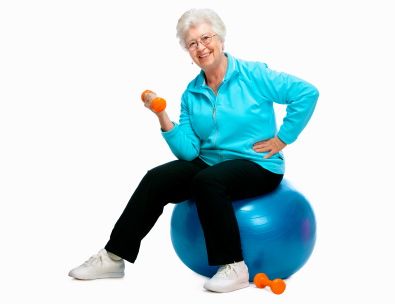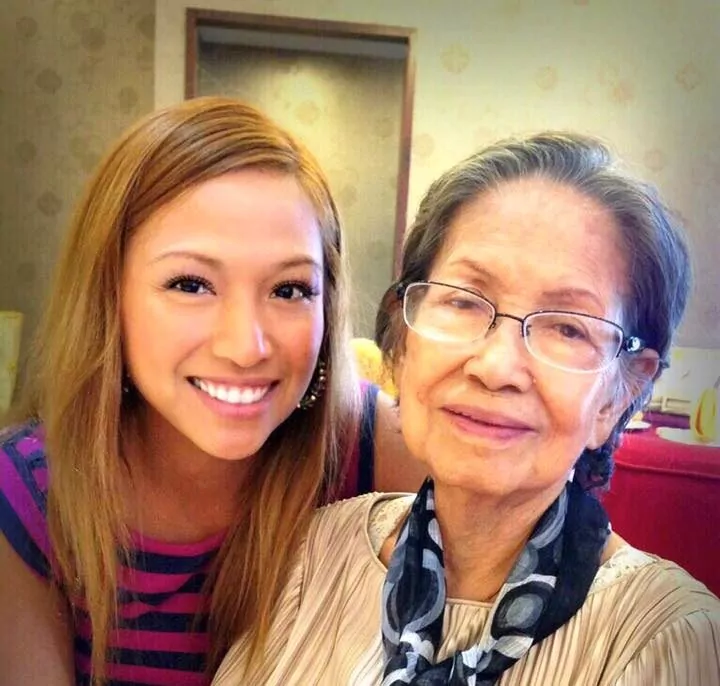Standing Strong
By Sheldon S. Zinberg, MD, Hal Nelson, PT, and Michael Merino, MBA
 In May 2008, a telephonic survey to assess the rates of self-reported falls, both with and without fractures, was initiated among a cohort of frail seniors over age 65 (with an average of 76 years). These seniors were all members of Nifty after Fifty® (NaF) fitness facilities, a Southern California company specializing in senior fitness through clinically supervised training.
In May 2008, a telephonic survey to assess the rates of self-reported falls, both with and without fractures, was initiated among a cohort of frail seniors over age 65 (with an average of 76 years). These seniors were all members of Nifty after Fifty® (NaF) fitness facilities, a Southern California company specializing in senior fitness through clinically supervised training.
In This Senior Health and Wellness Article:
Study on Benefits of Strength Resistance Training For Seniors
Patient Survey on Falls
Results of the Survey
Benefits of Supervised Strength Training For Seniors
A previous publication that revealed significant cost savings for “at risk” medical groups and their members raised questions concerning a decrease in the expected occurrences of falls and fractures, noted in the original study of mainly frail seniors.1 The current study consisted of a 12-week program using 30-minute exercise sessions two times a week, and customized home exercises four times a week. Eight specific resistance training exercises, as previously described, and unique gait-strength training exercises using performance pillars that provide pneumatic resistance were employed. In the performance-pillar training, the participants were placed in vests with loops on the front, back and sides. The loops were tethered to the pillars and the participants were trained to do specific balance exercises and walk in different directions against progressive resistance.
The study was supported by the Nifty after Fifty Foundation. Telephone surveyors asked all participants the same two questions as the 2006 survey conducted by Behavioral Risk Factor Surveillance System (BRFSS)
- In the past three months, how many times have you fallen? This is defined as when a person unintentionally comes to rest on the ground or another level.
- How many of these falls caused an injury? This is defined as something that forces a person to limit regular activities for at least a day to see a doctor. If the injury sustained was a fracture, participants were asked to state which bone.
Although 2,500 people were called, the number of past and present members who were finally surveyed and followed for one year totaled 1,428. Of these, 52 people (3.6 percent) had a fall and only 18 sustained fractures (1.3 percent). Nationally, 15.9 percent of respondents (the BRFSS survey) reported one or more falls in the previous three months. Other published BRFSS data noted that serious injuries and fractures occur in 31 percent of the senior population who sustain a fall.
The BRFSS surveyed all U.S. states, the District of Columbia and selected U.S. territories with an average of 1,751 calls to households with senior citizens per state to derive their data, a number similar to the number of surveys performed by Nifty after Fifty of its Southern California residents. The Nifty after Fifty group of seniors had statistically fewer falls and subsequent fractures than their national counterparts. The NaF participants were a heterogeneous and mixed population of seniors reflective of our national senior population, including both those who were self-referred and those who were referred by their physicians because of frailty.
According to the Centers for Disease Control (CDC), more than one-third of adults 65 years of age and older fall each year and 20 to 30 percent experience a fracture or moderate-to- severe injury.3 Based on this data, it would be expected that 476 falls (one-third of 1,428 surveyed seniors) and 119 fractures or other severe injuries (25 percent of a projected 476 falls) would have been sustained instead of the results obtained. With only 18 fractures occurring where 119 were expected, and 52 falls where 476 were expected, this program’s results show an 80.2-percent reduction in fractures and an 89-percent reduction in falls, adding to the reports that supervised gait and strength training reduces falls, fractures, and other serious injuries.
The CDC estimates fractures add an average of more than $19,400/fracture to Medicare spending (excluding physician’s fees), suggesting that $1,959,400 Medicare dollars were saved during the year just at Nifty after Fifty facilities (101 less than anticipated fractures multiplied by 19,400 dollars). This would equate to an average savings of $1,372 per participant per year. Assuming the cost of this program could be provided for $60 a month for three months each year (or $180 per year per participant), the savings achieved by reducing the rate of fall-related fractures alone would average $1,192 a year per Medicare recipient.
Moreover, the current 42 million Medicare recipients are expected to grow to more than 80 million over the next several years. If this training was prescribed to a fraction of Medicare recipients, the net cost savings for CMS would potentially amount to several billions of dollars each year and continue to grow into the foreseeable future.
Conclusion: Supervised Strength Training Is Good For Seniors’ Health
Supervised strength training of our senior population has proven to be a benefit to the general health of seniors. The addition of gait-strength training to these programs will be associated with a significant reduction in falls, fractures and a further reduction in total net health care costs. These programs should be made more available to seniors and should be further promoted as an important health care benefit for Medicare recipients.
References
- Zinberg, S., Furman, D., & Austin, J. (2007). Older and Wiser ADVANCE for Directors in Rehabilitation, 16{4), 39-il.
- Stevens, J., et al. (2008). Self-reported falls and fall-related injuries among persons aged >65 years—United States, 2006. MMWR, 57(9), 225-229.
- Centers for Disease Control. (2010). Accessed April 24, 2010.
 About The Author: Dr. Sheldon Zinberg is a distinguished physician, author, professor, entrepreneur and a Senior Fitness Expert in SeniorCareHomes.com.
About The Author: Dr. Sheldon Zinberg is a distinguished physician, author, professor, entrepreneur and a Senior Fitness Expert in SeniorCareHomes.com.
Dr. Zinberg is the Founder of Nifty After Fifty, an exclusively designed senior health & fitness chain with a wellness vibe. He received a B.A. from Seton Hall University where he matriculated by way of scholarship. Upon graduation, he was awarded the Cooper Alloy scholarship for academic achievement and used this to attend the Philadelphia College of Osteopathy, where he graduated with honors.
Related Articles:
- Prescribed Fitness Exercise Program For Chronic Diseases
- Improving Your Eating Habits
- Exercise for a Healthy Lifestyle
- Tips to Healthier Eating Habits
- Look Young and Fabulous
- Health Benefits of Pet Therapy For Seniors
- Behaviors To Promote Healthy Aging For Seniors
Other SeniorCareHomes.com Helpful Links:
- Seniors Online Community & Discussion Forum
- Senior Care Facility Search
- Senior Facility Registration
Catharine “Kate” is a Certified Administrator for Residential Care Facilities for the Elderly (RCFE) and an Expert Senior Care Advisor. Kate’s grandmother battled Alzheimer’s Disease and Kate personally understands what millions of families are going through. Kate and her team are very passionate in empowering Seniors and their families by providing them with the Best Available Senior Care Options based on Senior’s care needs, preferred location and family’s budget.


